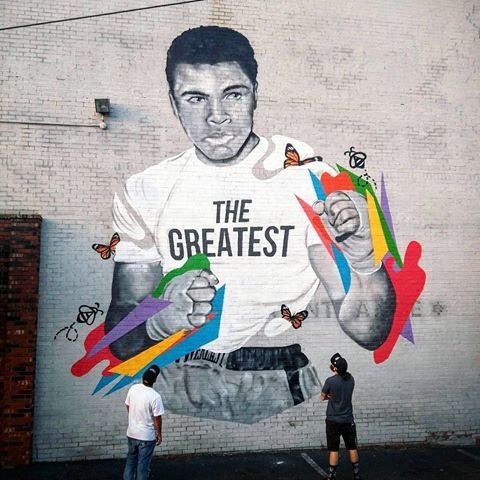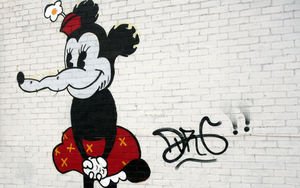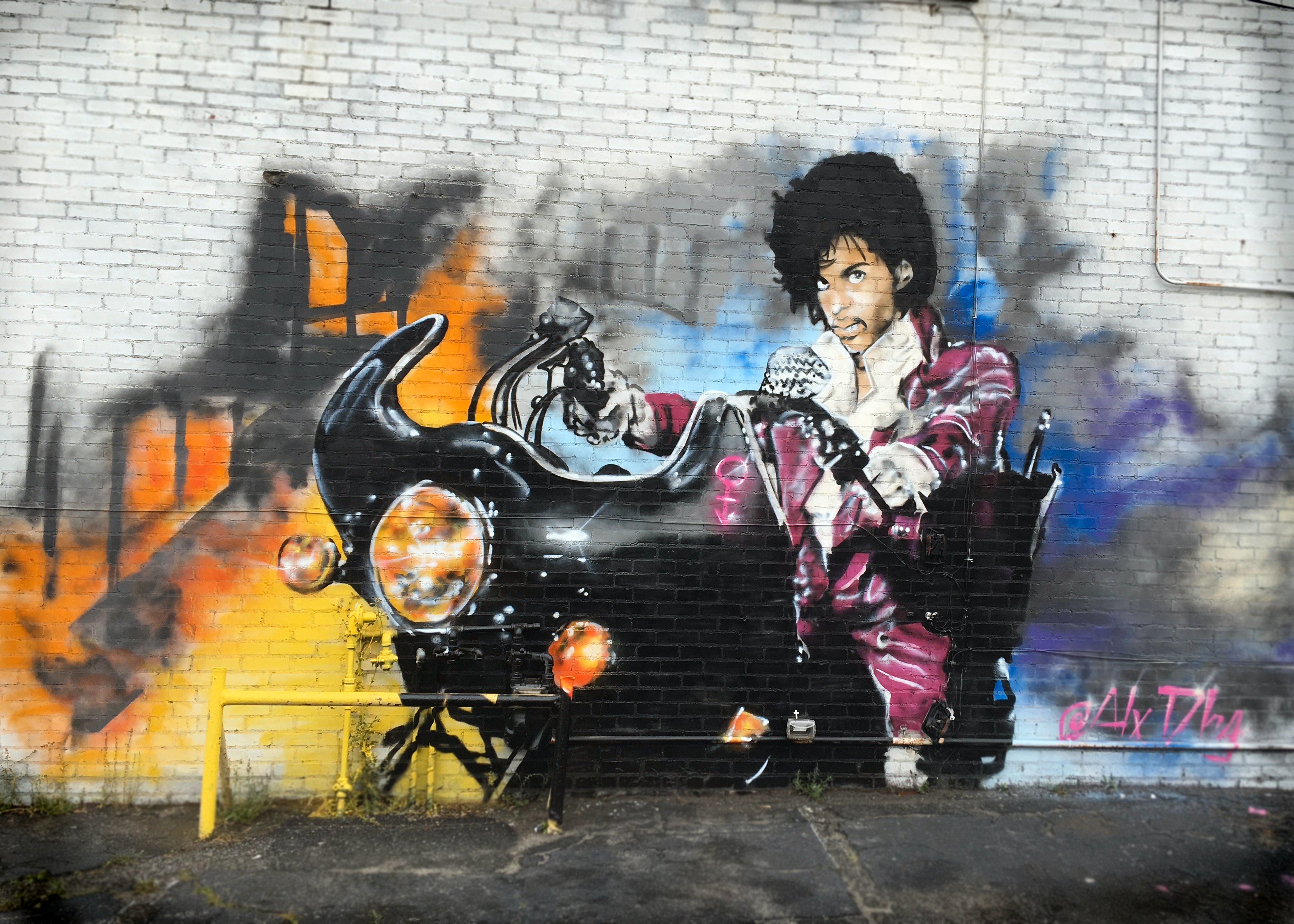CACKALACK
Sometimes Art Comes and Goes.
In a quiet Southern town, a pair of new murals has shaped the way citizens think about public art.
Of all places, downtown Statesville, North Carolina happens to be home to one of the more inspiring memorials honoring rock legend Prince. The city, a former industrial town in the Piedmont that sits at the intersection of two interstates, has its share of empty buildings mingled in with restaurants and businesses working to revitalize the downtown square.
Virtually overnight this past April the Prince mural, a colorful, spray-painted depiction of Prince on a motorcycle, popped up on the exterior wall of the New South Gallery, an empty store-cum-art space owned by Statesville’s Gordon family that plays host to local artists.
A month and a half later, Muhammad Ali appeared in paint on the side of a building across the parking lot.
Large graffiti artworks — and these murals are indeed reflections of the greater-than-life personas of Prince and Ali — tend to have short lifespans, especially in Bible-belt towns. Until recently, a city ordinance strictly prohibited such displays. In Statesville, though, a wave of support for the artwork has pushed the city to reshape its thinking about what was only recently deemed graffiti.

Towns like Statesville are more often site to the down-home Coca-Cola or Pepsi murals that frequently graced buildings in the mid twentieth century, nostalgic scenes of early automobiles or leggy, wartime blondes baking in the summer sun. They are all undeniably lily-white in their cultural references. So for a town like Statesville to suddenly be home to two spray-painted murals depicting two enormous African-American legends — and for those murals to be vociferously defended by the community — evidences a noticeable progressive streak in this Southern city.
Perhaps some context might help: the city ordinance prohibiting spontaneous outdoor art has provoked resistance in the past. In the spring of 2015, the same artist who produced both Prince and Ali, known locally as ALX DLRG, painted a pointed rendition of Minnie Mouse on the same exterior wall at New South.
The Minnie mural was initially met with interest and curiosity. This painting was smaller, able to be hidden by a parked car. At first, it was hard to tell if the artwork had been commissioned or approved, or if this might have just been run-of-the-mill graffiti.

At the time, Statesville’s city regulations weren’t prepared for art like this. The law directed that all outdoor murals had to be pre-approved by the council and condoned by the building’s owners before their creation. While initially community members wondered if anyone had even noticed, eventually Minnie Mouse earned the attention of the city council, who order the artwork removed.
Dozens of locals asked our city government to save the Minnie Mouse mural, writing letters to the editor and signing petitions. The work was eventually painted over with the beige that’s now the background to the Prince painting.
After Prince appeared last April, locals flocked to the site to snap pictures (this author included), fearing the same ordinance-bound fate would inevitably meet Prince. A similar spate of Facebook comments, letters to the editor, and petitions appeared to save the Purple One as they had for Minnie.
This time, though, the city council pivoted.
After a lengthy debate, the city decided to amend the legislation to allow for “art zones,” or safe places for artists like ALX DLRG to create their murals. Any business could apply to become an art zone, and the new wording ensured Prince would be around for at least a year — the maximum display time for artwork.
Art supporters rejoiced. They claim that murals like these are indeed art, that Statesville needs more of it, that people choose to live here for things like this — not for obtuse ordinances that suck the joy out of life.
Muhammad Ali, however, presented a new challenge. The Ali mural was painted on the wall of an old furniture store, one that was at the time of the artwork’s creation not a designated “art zone.” Since the city ordinance isn’t retroactive, council members affirmed this week that they will have no choice but to remove it.
Today, the local paper bears a bold headline: “City KO’s Ali.” The comments are already flooding in defending the work.
Back in April, when the Prince mural seemed equally doomed, I wrote an op-ed in which I made the same claim I’ll make now: it’s just fine for artwork to come and go. Art was never intended to be permanent or immortal. The tribute to Prince fits right now, as does the tribute to Ali. Lots of people are hurting over the loss of these celebrated men.
The greatest thing about these pieces of artwork is that both initially defied the rules, much as their subjects often did. Both appeared overnight, seemingly out of nowhere, and were quickly embraced by folks far beyond city limits. Pictures of the paintings went viral on Facebook and elsewhere, shared and liked thousands of times. As art, each served a beautiful and important purpose.
The New South Gallery enabled that purpose in many ways — first as the short-lived home to Minnie Mouse and as the temporary home to Prince. It has established itself as a renewable community center, a place where we can gather around that which moves us, and it has challenged our town and its citizens to think harder about artwork.
Sometimes art comes and goes. If nothing else, it encourages us to live in its moment, a reminder that life for us and for art is sometimes short. And a lot of us in this quiet Carolina town are eager to see what comes next, what inspired portrait emerges from the darkness of a humid summer night.
AUTHOR’S NOTE:
I originally wrote this article at the first appearance of ALX DLRG’s Prince mural, then updated it after the Ali mural came and went. It appeared as an op-ed piece on SVLFreeNews.com.
In December 2016, the New South Gallery announced they would be closing their doors at the end of the year and moving on to other artistic ventures.






1 Pingback